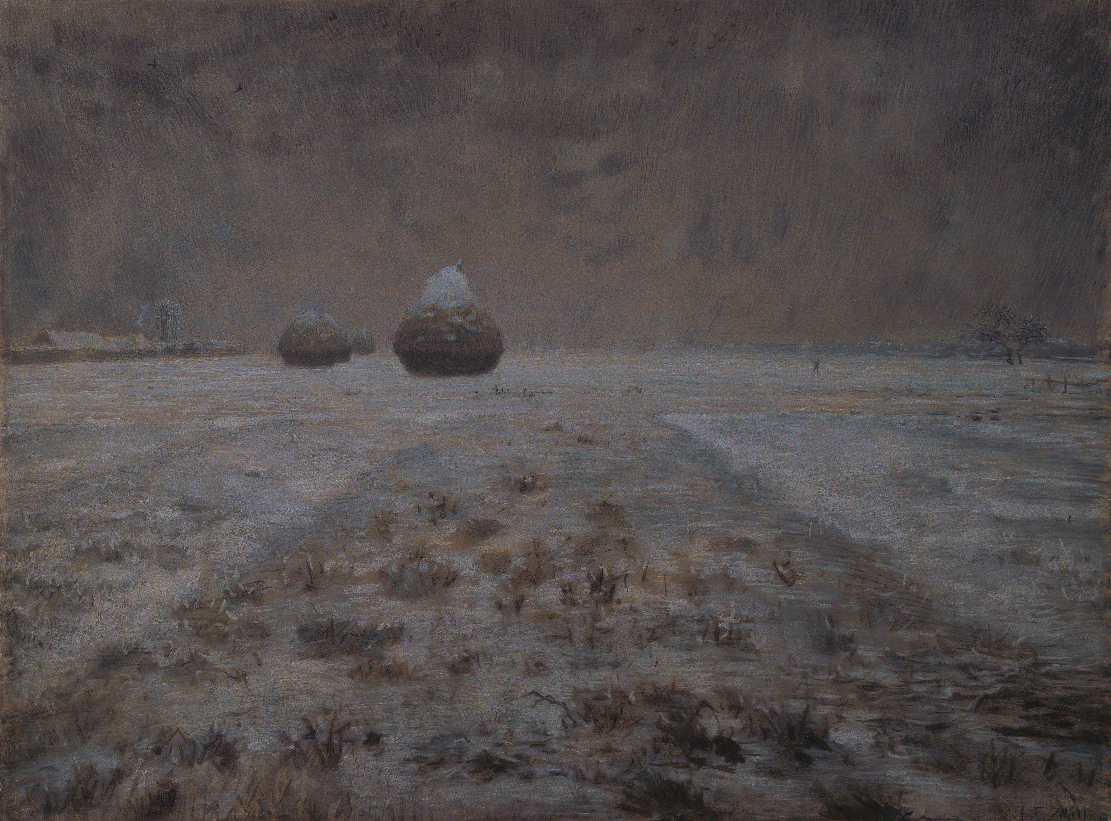
- France, c. 1868
- Pastel
- Inv. 89
Winter
As a leading member of the Barbizon School, Jean-François Millet helped to create a new form of naturalism. The relationship between man and the environment, depicted with fatalistic undertones, was the central theme of his original and powerful work. The artist not only proved himself capable of continuing the tradition of Breughel but also heralded the extraordinary art which, a little later, Van Gogh would begin to produce.
A hymn to nature and country life, this austere and melancholic landscape forms part of a group of works depicting vast fields that the painter began in the 1860s. The sparse use of colour suggests a desolate and harsh landscape and simultaneously highlights the vision of a grey world. Here, Millet’s domain is the silent realm of the icy plain, the infinite horizon, the cyclical harshness of the seasons, and the solitary space within which man, scarcely present in this work, is symbolically positioned.
Albert Cahen d'Anvers Collection. Acquired by Calouste Gulbenkian through Graat et Madoulé at the Cahen d'Anvers Sale, Galerie Georges Petit, Paris, 14 May 1920.
H. 69 cm; W. 93 cm
Moreau-Nélaton 1921
Étienne Moreau-Nélaton, Millet raconté par lui-même. Paris: Henry Laurens Éditeur, 1921, vol. III, p. 39, no. 250.
Sampaio 2009
Luísa Sampaio, Painting in the Calouste Gulbenkian Museum. Lisbon/Milan: Calouste Gulbenkian Museum/Skira, 2009, pp. 192–3, cat. 85.